Red Light and Yeast Infections
Contents
Introduction, Can Light Therapy Reduce Inflammation, Red Light Helps Kills Yeast?, Possibly Solving Recurrent Infections with Light, Summary, References
Medical & Healthcare Disclaimer
The information contained in this article is not intended or implicitly suggested to be an alternative for professional diagnoses, or profesionally recommended treatments & medical advice. Absolutely all of the content, including the article text itself, images, comments and other information, contained on this web page is for non-specific information purposes only. We strongly suggest that one should never ignore professional health/medical advice and we strongly suggest that one must not delay seeking a professionally recommended medical treatment because of information attained via reading this article/website. The products sold or recommended on this web site are absolutely not for the diagnosis, prevention, monitoring, treatment or alleviation of any specific disease, injury or disability.
Introduction
It’s surprising just how many of us suffer from chronic infections on a weekly or monthly basis. While some may write it off as a part of life, inflammatory issues like this are not normal and need to be treated.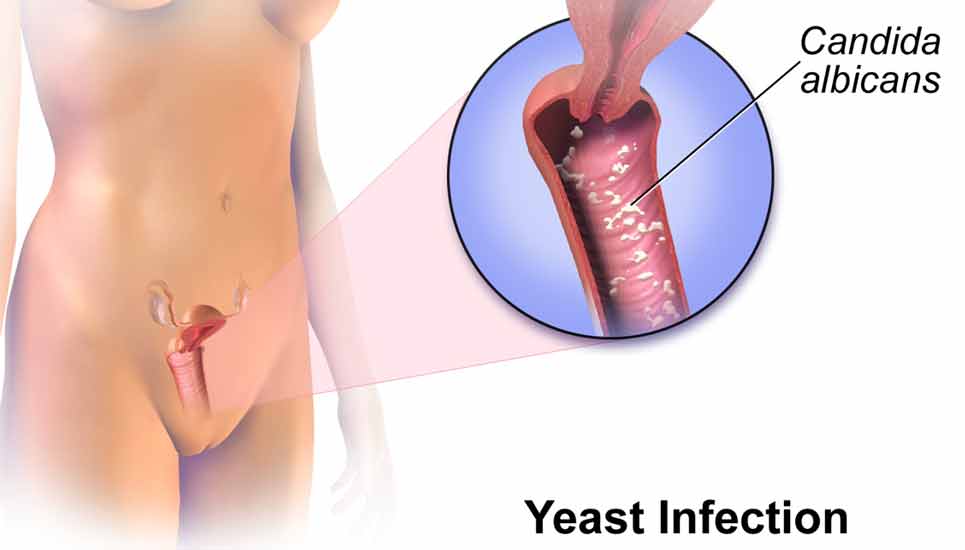
Illustration of a candida based vaginal thrush infection
Suffering from recurring infections puts the skin in a state of constant inflammation, and in this state the body forms scar tissue rather than healing with normal healthy tissue. This disrupts the function of a body part forever, which is a major problem in areas like the genitals. Whatever and wherever on the body you might be prone to these issues, it’s likely that red light therapy has been studied. Why exactly is red light of interest in regards to infections? Here are a few ways in which light therapy might help:-Red Light Reduces Inflammation?
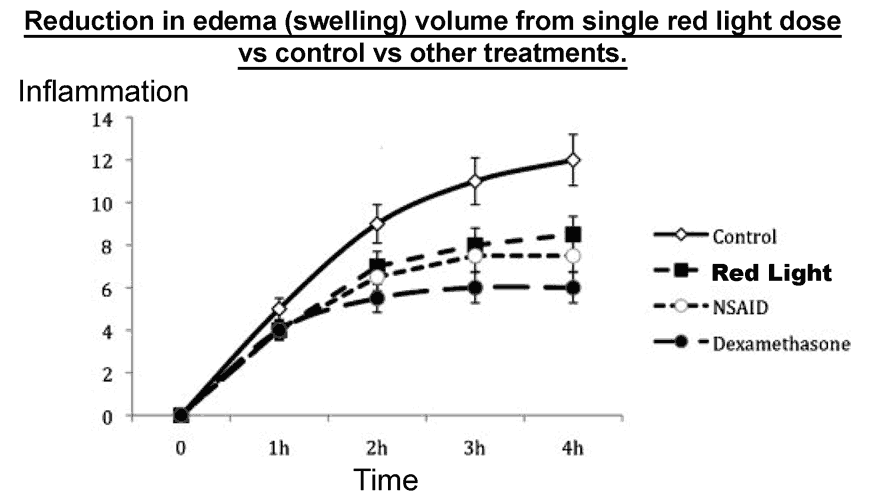
FIG 1. Graph summarising the short term effects of low dose 630-780nm red light on inflammation.(5)
Some studies on red light lead to the potential conclusion that it may actually help the body to deal with the metabolic causes of inflammation5, allowing cells to produce more ATP and CO2through our normal respiration reaction. These products of respiration have a supposedly almost identical effect to anti-inflammatory compounds in that they inhibit prostaglandin synthesis (prostaglandins being a main mediator of the inflammatory response) and stop the release of various inflammatory cytokines.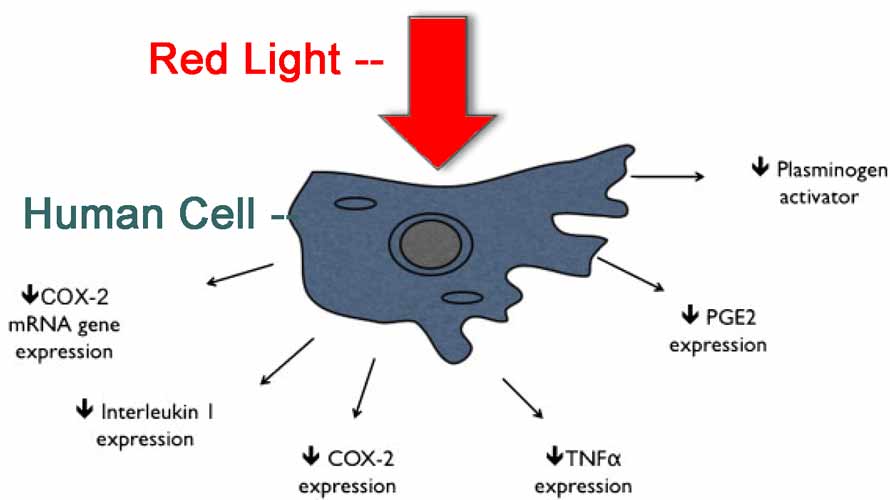
Changes in cellular metabolism to downregulate inflammation after exposure to red light
Some people think inflammation is a necessary part of the healing response to infections or injury, but it should be considered a symptom of the body not working correctly. This can be shown by how in the fetus of most animals, it’s normal for an injury to heal without any inflammation whatsoever, and even in childhood, inflammation is minimal and resolved quickly. It’s only as we age and our cells stop functioning properly that inflammation increases and becomes a problem.Light Therapy harms Yeast & Bacteria?
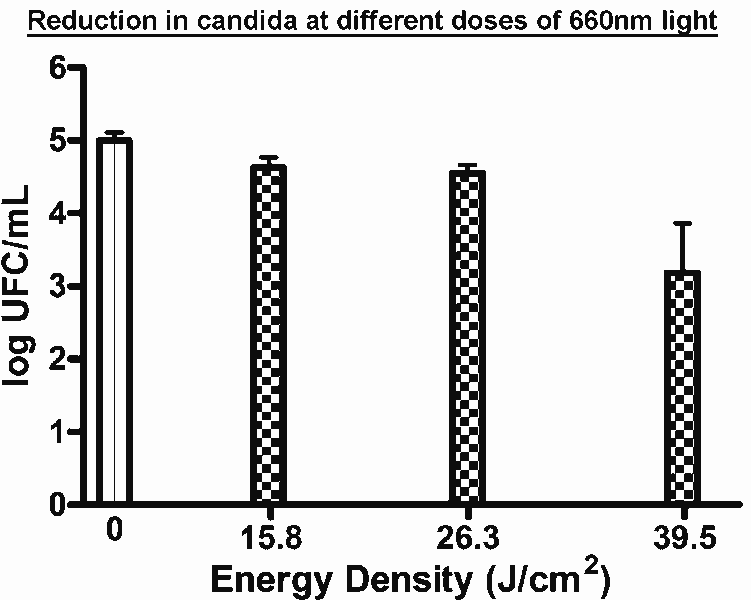
FIG 2. Chart showing the effect of a one time exposure of red 660nm light, at different doses (and control at 0), to candida colonies.3
Perhaps the main reason behind the interest in red light for infections is that red light can, in some organisms, directly destroy the fungal or bacterial cell body. Studies show a dose dependent effect, so it’s important to get the right amount of exposure. It seems that in the studies done on the topic, higher doses and longer exposure times eradicate more of the candidaFIG 2. Low doses seem to just inhibit the growth of yeast. Fungical treatments involving red light usually also involve a photosensitizer chemical, in a combination therapy known as photodynamic therapy. While adding photosensitizer chemicals such as methylene blue does improve the fungicidal effects of red light, red light alone still has an effect in some studies2-3. This could perhaps be explained due to the micro-organisms already containing their own endogenous photosensitizer components, which our human cells do not. The red or infrared light supposedly interacts with these chemicals in the fungal cells, causing a destructive chain reaction that ultimately destroys them. Whatever the mechanism is, red light therapy alone is studied for infections from a wide range of fungi and bacteria. The beauty of using red light to treat infections is that while the micro-organisms are potentially being killed/inhibited, your own skin cells are producing more energy/CO2 and so inflammation could be reduced.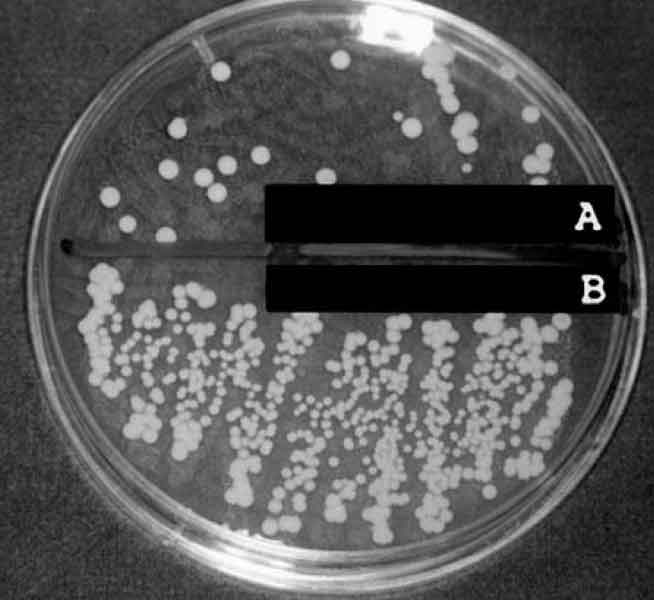 Before
Before
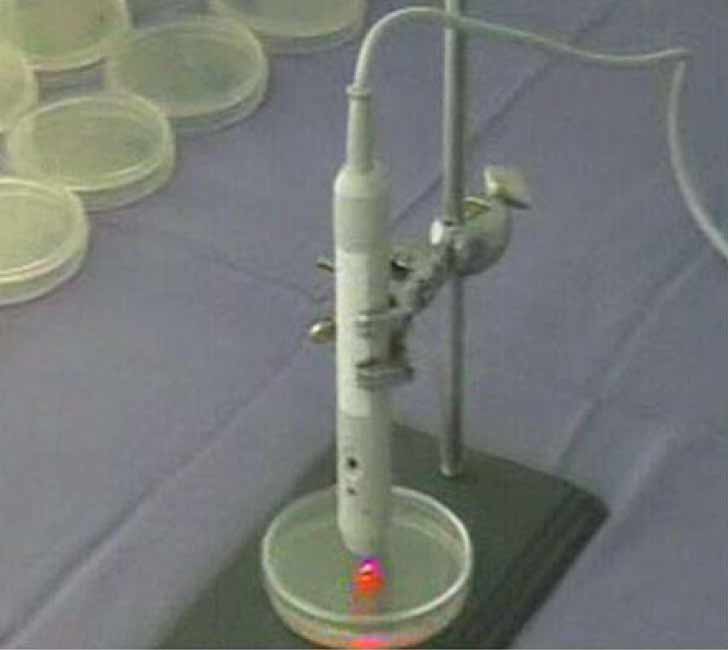
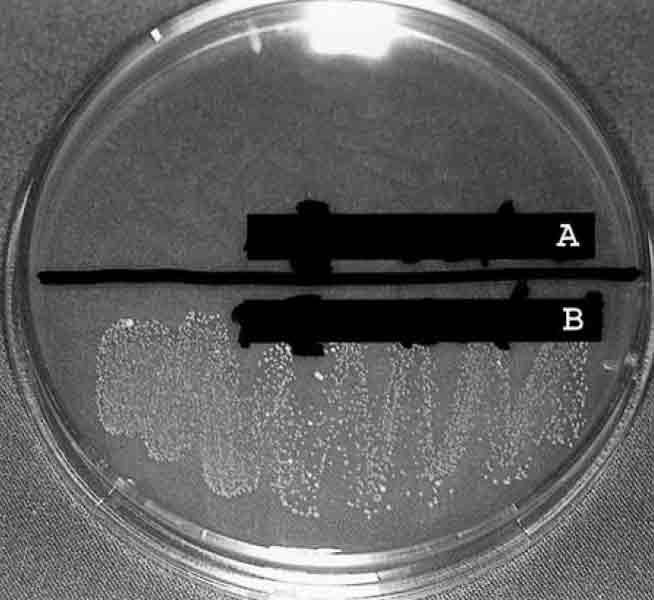 After
Fig 3. Yeast cells growing on a nutrient plate. Red light being used to kill yeast in the lab at 685nm1-2.
After
Fig 3. Yeast cells growing on a nutrient plate. Red light being used to kill yeast in the lab at 685nm1-2.
Solving recurring & chronic yeast infections?
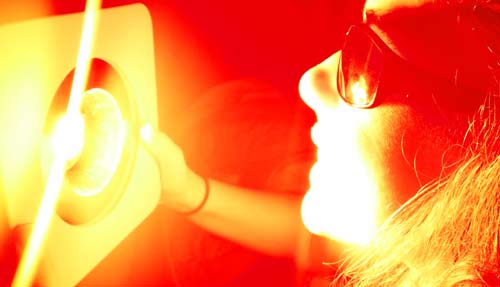
Red light has been studied for oral candida issues
Many people experience relapses and recurrent infections, so finding a long term solution is crucial. Both of the above potential effects (healing without inflammation and sterilising the skin of harmful micro-organisms) of red light may lead to a downstream effect – healthier skin and better resistance to future infections. Low amounts of candida/yeast are a normal part of our skin flora, usually causing no negative effects. Low levels of inflammation (from any cause) actually promote the growth of these yeast organisms specifically, and then the growth leads to more inflammation – a classic vicious cycle. The tiny increase in inflammation quickly esclatates into a full blown infection.6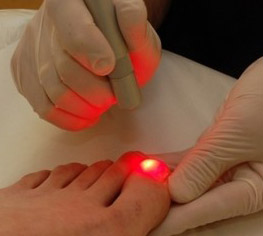
Red light being used to treat toenail fungus
This can be from hormonal, physical, chemical, allergy related, or various other sources – many things affect inflammation. Studies have looked at red light to directly treat recurrent thrush infections. It is noted that using red light when you feel a infection coming on is perhaps the best idea, literally ‘nipping it in the bud’. Some research speculates on that idea of using red light consistently over weeks and months to prevent the yeast infection/inflammation entirely (thus allowing your skin to fully heal and flora to normalise) is perhaps the ideal long term solution. The skin in commonly infected areas needs several weeks without any inflammation to fully heal. With the natural structure of the skin restored, resistance to both inflammation and future infection is massively improved.What type of light do I need?
Nearly all of the studies in this field use red light, most commonly in the 660-685nm range. Several studies exist that use infrared light at wavelengths of 780nm and 830nm and they show almost identical results per dose applied.2 The dose of red or infrared energy applied seems to be the main factor to consider for results, rather than wavelength. Any wavelength between 600-900nm is studied. With the available data, it seems like appropriately used red light gives slightly more anti-inflammatory effects. Infrared light may give a slightly greater fungicidal effect. The differences are only slight though and not conclusive. Both have a strong anti-inflammatory/fungicidal effect. Both of these effects are equally essential for resolving fungal infections. Infrared has better penetration properties than red, which is worth noting in regards to deeper fungal infections in the vagina or mouth. Red light may not physically be able to reach candida colonies further inside the vagina, whereas infrared light may. Red light seems interesting for all other instances of fungal infections of the skin.How to use it?
One thing we can take from the scientific data is that various studies point to higher doses of light as useful in eradicating more of the fungal infection. Consequently, longer exposure times and closer exposure therefore leads to better results. As the fungal cells directly lead to inflammation, it follows that, in theory, higher doses of red light would potentially resolve the inflammation better than low doses.Summary
* Light therapy is studied for short and long-term treatment of fungal issues.- * Red & infrared light are both studied.
References
- Effect of low-level laser therapy on Candida albicans growth in patients with denture stomatitis. Maver-Biscanin M. 2005
- Effects of low-level laser irradiation on the pathogenicity of Candida albicans: in vitro and in vivo study. Seyedmousavi S. 2014
- Comparison of the photodynamic fungicidal efficacy of methylene blue, toluidine blue, malachite green and low-power laser irradiation alone against Candida albicans. Souza RC. 2010
- Antimicrobial photodynamic inactivation inhibits Candida albicans virulence factors and reduces in vivo pathogenicity. IT Kato – 2013
- The anti-inflammatory mechanism of low level laser therapy and its relevance for clinical use in physiotherapy. Jan Magnus Bjordal. 2010
- Inflammation and gastrointestinal Candida colonization. Carol A. Kumamoto. 2011
- In Vitro effect of low-level laser therapy on typical oral microbial biofilms. FG Basso. 2011
- Treatment of oral candidiasis with methylene blue-mediated photodynamic therapy in an immunodeficient murine model. MC Teichert. 2002
